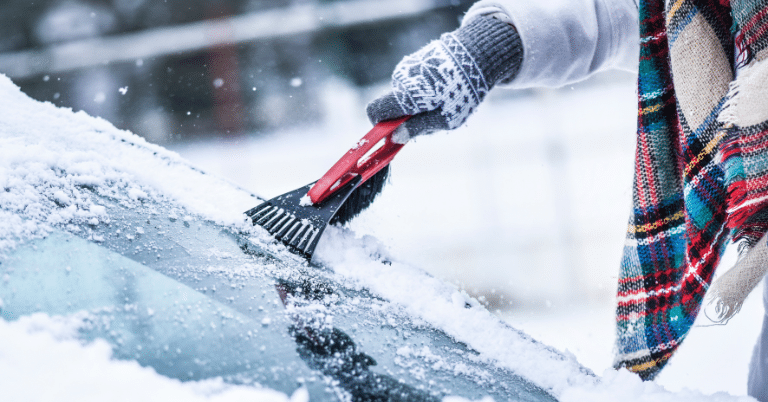
Request Free Consultation
To get answers to questions about your injury, contact Catalano Law for a FREE case evaluation. We’ll assess your case, explain your legal options, and recommend the next steps at no cost. We’re here when you need us.
Contact Form
General Contact Form

As winter settles in, road conditions can change quickly, making daily routines more hazardous than usual. Whether commuting to work, running errands, or adventuring on winter getaways, ensuring your vehicle is prepared for ice and snow is essential to help prevent potential accidents.
Proper maintenance helps your vehicle run efficiently and winter-specific tires can mean better traction on icy roads. For accident-free travels this winter, follow these vehicle maintenance steps and learn about winter weather driving maneuvers to stay safe.
Winter Vehicle Maintenance Checklist
To ensure your car operates safely in cold conditions, it’s vital to maintain it properly. As winter approaches, follow this checklist to get your car’s battery, tires, brakes, and fluids ready:
- Battery. Cold weather can reduce a battery’s efficiency, leading to potential problems starting the vehicle. Check and clean your battery frequently to ensure proper connections and prevent electrical issues. If it’s older than 3-5 years, consider replacing it before the winter season.
- Tires. Tires wear out over time and lose grip, making them especially dangerous when the surface is slick in winter. Check the tread on your tires and make sure it is no less than 4/32”.
- Brakes. Before winter arrives, visually inspect your brake pads through the wheel spokes for adequate thickness and replace them if they are under a ¼”. Ensure brake fluid is clear and replace it if it is cloudy or dirty. If your brakes squeal or feel slow, change the pads or visit a mechanic before heading out on icy roads.
- Fluids. Proper fluid levels are vital in the winter, as cold temperatures can affect fluidity and the vehicle’s performance. Check and replenish engine coolant with a 50:50 ratio of water to antifreeze, inspect windshield washer fluid, and consider using lower viscosity oil to adequately lubricate the engine.
- Lights and visibility. Due to conditions like fog, rain, sleet, and snow, focus on high visibility in winter. Verify your vehicle’s lights are working correctly, replace bulbs as needed, and replace your wipers with silicone ones to help remove ice and snow when driving.
Winter-Specific Items for Your Vehicle
As winter settles in, it brings a unique set of challenges for drivers. The following winter-specific items for your car can help you navigate roads safely:
- Snow tires. Snow tires can be one of the most beneficial investments for winter safety. These specialized tires are made of flexible rubber that provides better traction in snow and ice, improving your vehicle’s grip on slippery roads. Have them installed on all four wheels for balanced handling.
- Ice scrapers and snow brushes. Frosty mornings and snowfall can obscure your view, making it hard to see as you start your daily commute. Keep an ice scraper and a snow brush in your vehicle to remove ice and snow from the mirror, doors, and windshield quickly and effectively, helping you see people, cars, and bicyclists clearly on cold, frosty mornings.
- Winter emergency kit. Winter weather can be unpredictable, and you may find yourself stranded in cold conditions. Assemble a winter emergency kit that includes items like space blankets, non-perishable food, water, a flashlight, batteries, a first aid kit, and basic tools. Having these supplies on hand can be a lifesaver in emergencies.
Safe Driving in Winter Conditions
Winter’s arrival brings picturesque snowscapes and holiday cheer but also ushers in hazardous road conditions. To travel on icy, snow-covered roads more safely, do the following:
- Reduce speed. Slowing down is the most effective way to stay safe on winter roads. Reduced speed allows for better control and increases reaction time in unexpected situations.
- Maintain a safe distance. Increase the distance between your vehicle and the one in front of you. In icy conditions, stopping distances can be significantly longer, and maintaining a safe following distance reduces the risk of rear-end collisions. Aim for slightly more than the usual three-second recommendation.
- Smooth acceleration and braking. When braking, apply the throttle and brakes gently to avoid skidding. Abrupt actions can cause loss of control on slippery surfaces. If your vehicle has anti-lock brakes (ABS) or a traction control system, let them do their job. Apply steady, firm pressure on the brake pedal, but avoid harsh maneuvers that could result in a spinout and collision.
Stay Prepared to Avoid Disaster
Driving safely in winter is crucial. But if an accident does happen, you can work with a knowledgeable attorney to investigate liability and seek compensation. At Catalano Law, our Syracuse car accident attorneys have 50 years of combined experience handling vehicle accident claims.
We can help determine who is responsible for your injuries and explore your options for a fair settlement. Contact our skilled lawyers today for a free case review.

